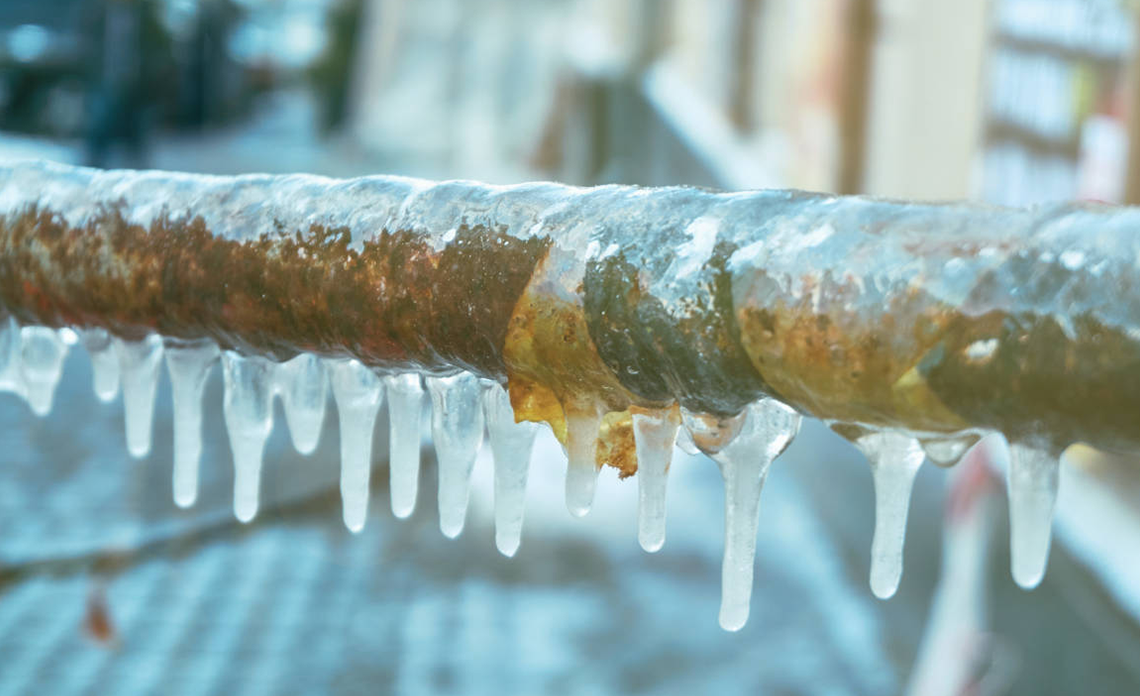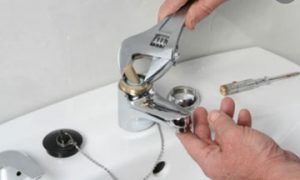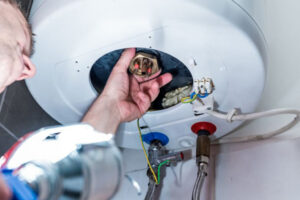Cold temperatures can cause water to freeze throughout your plumbing system. While many people think of freezing water occurring only outdoors, low temperatures do have an effect on indoor plumbing pipes. When severe winter weather hits, pipes throughout your system can freeze and burst. This issue is especially common in areas where freezing temperatures do not occur often due to a lack of proper insulation. It is important to understand why plumbing pipes freeze and how to prevent this issue from happening to you.
What happens when pipes freeze?
Many people think that plumbing pipes will thaw when the weather warms up without incident. However, your pipes can burst and cause flooding throughout your home if they freeze. Water expands when it freezes and will burst out of whatever is containing it if there is not enough space to accommodate the expansion.
In the case of plumbing pipes, once the water begins to freeze, it will block normal flow. Once your pipes are completely frozen, they will burst, because the water has nowhere to go. Your property could be subject to flooding and other types of damage if this happens. The following are some ways that you can help prevent freezing plumbing pipes this winter.
Keep the heat on
Always keep your heat on, whether you are working all day or simply leaving for lunch or dinner. If you or your tenants are leaving for a vacation, remember to leave the heat on a reasonable temperature. Doing this doesn’t mean that you need to set the thermostat at 75 degrees Fahrenheit. If you keep the temperature at around 50 degrees, that is typically enough to keep your water from freezing, without hurting your wallet.
Let the faucets drip
This is one instance when using too much water is a good idea. Running water takes longer to freeze than still water. Accordingly, if you keep your water dripping, that will slow down the freezing process. Your plumbing pipes burst because the pressure from expanding water becomes too much for them to contain. If you allow your faucet installation to drip, you relieve pressure on the pipes, which means they might freeze, but they probably won’t burst.
Control the movement of heat
Keep all of your interior doors, cabinets, and closets open if possible. Many plumbing pipes are located in or behind cabinets. By keeping these doors open, you allow heat to flow more easily from room to room.
Every little hole and crack allows heat to escape and cold to enter. Before it gets cold, seal everything you can with caulk. This will prevent heat loss so that more air can be circulated throughout your home.
Use heating tape
You can try wrapping any of your plumbing pipes that are easily accessible in electrical heating tape. There are two types of electrical heating tapes that you can use. The first type is automatic, which means it detects when heat is needed and activates. The second type generates heat only when it is plugged in. If you use heat tape, be careful. These products have their own sets of dangers, so you should carefully follow the product’s instructions.
Add extra insulation
Most of your plumbing pipes will be covered by insulation. However, some that are located in less accessible areas, such as attics, will not have the same insulation as the primary rooms. For pipes in those areas, you can try adding extra insulation to protect them. You can also try wrapping pipes with fiberglass or rubber sleeves. However, for pipes that are inside a wall, this method can get very expensive. You might want to try adding insulation to the walls and ceilings to save money.
Freezing plumbing pipes are a serious problem in both cold and warmer climates. If you need assistance with your plumbing or gas line installation, contact the professionals at Cole’s today. Our expert plumbers provide the best services in Denton and Collin Counties, at the best prices. Call/text (972) 210-9033 or complete the Get an Estimate form to ask questions or get started on your repair service.







